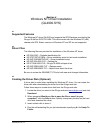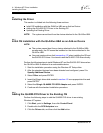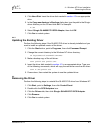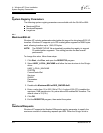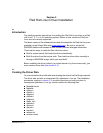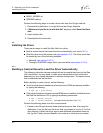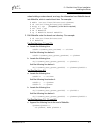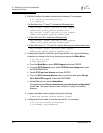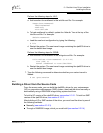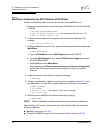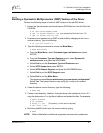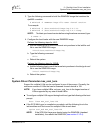
5 – Red Hat Linux Driver Installation
Installing the Driver
5-2 IS0053301-00 D
Q
■ BUILD_KERNEL.txt
■ README.qla4xxx
Perform the following steps to create a driver disk from the QLogic web site:
1. Download the qla4xxxsrc-v1.xx.tgz file from the QLogic Web site.
2. If What would you like to do with this file? displays, select Save this file to
disk.
3. Insert a blank disk.
4. Download the file to the disk.
5.3
Installing the Driver
There are two ways to install the Red Hat Linux driver:
■ Build a custom kernel that loads the driver automatically (see section 5.3.1).
■ Build the driver from the source code (see section 5.3.2). The driver must then
be loaded by one of the following methods:
❑ Manually (see section 5.3.2.3)
❑ Through a RAMDISK image, which you must build (see section 5.3.2.4)
5.3.1
Building a Custom Kernel to Load the Driver Automatically
The following instructions are an example of how to compile the driver into the Red
Hat Linux kernel. You may need to make some adjustments to the instructions
depending on your system hardware or software configuration. The kernel source
tree is referenced as /usr/src/linux.
Before building a custom kernel, do the following:
■ Verify that both kernel-headers and kernel-source RPMs are already installed
by typing the following:
# rpm -qa | grep kernel
■ If the kernel-headers and kernel-source RPMs are not installed, install them from
the Red Hat distribution CD by typing the following commands:
# rpm -i kernel-source*
# rpm -i kernel-headers* (not required for Red Hat Linux 7.3)
Perform the following steps to build a custom kernel:
1. Create a new QLogic directory under the kernel source tree, then copy the
qla4xxxsrc-v1.xx.tgz file from the driver disk you created in section 5.2 to the
new directory. Extract the driver source and additional information files from
the .tgz file. Finally, remove Makefile, the contents of which are not needed




